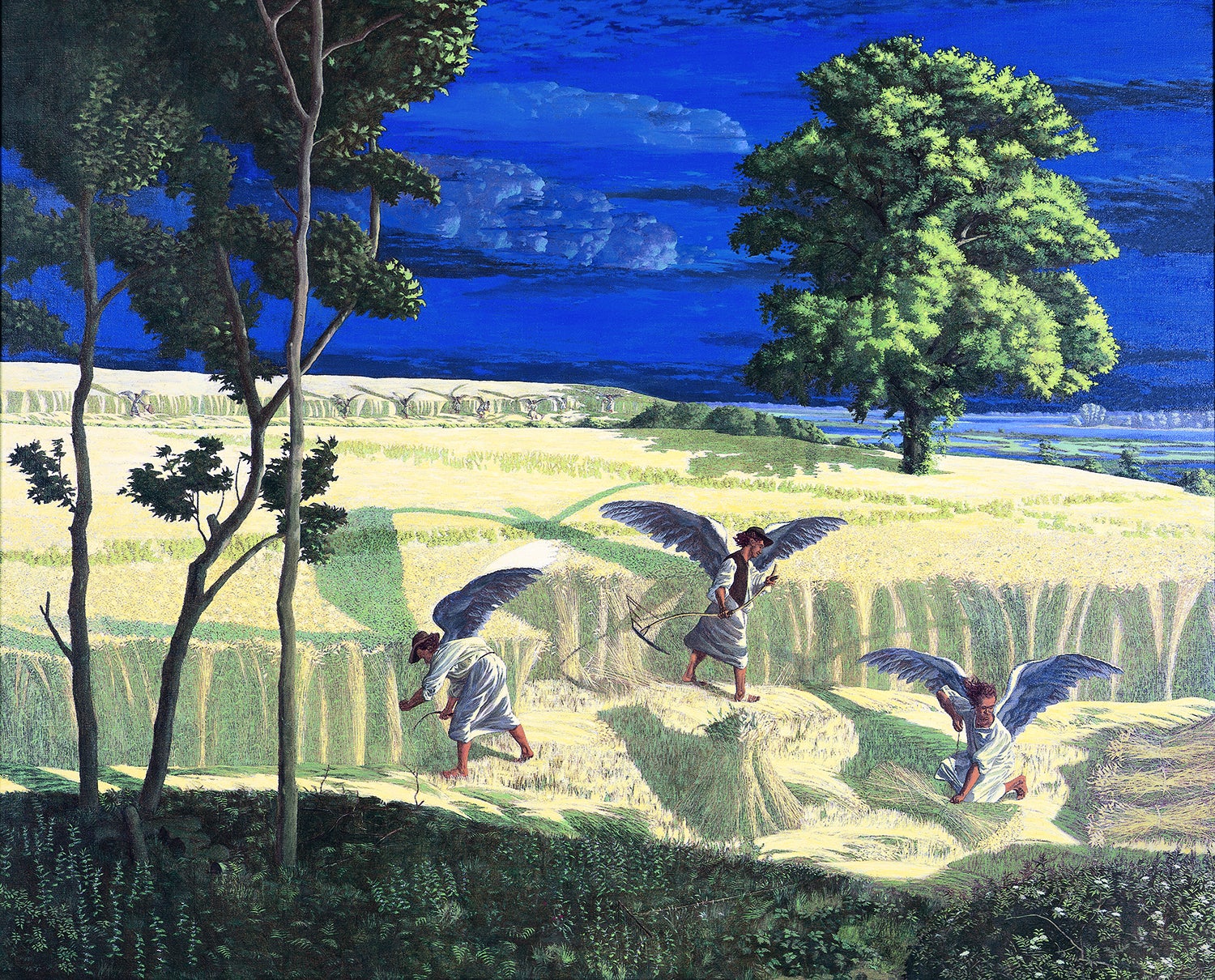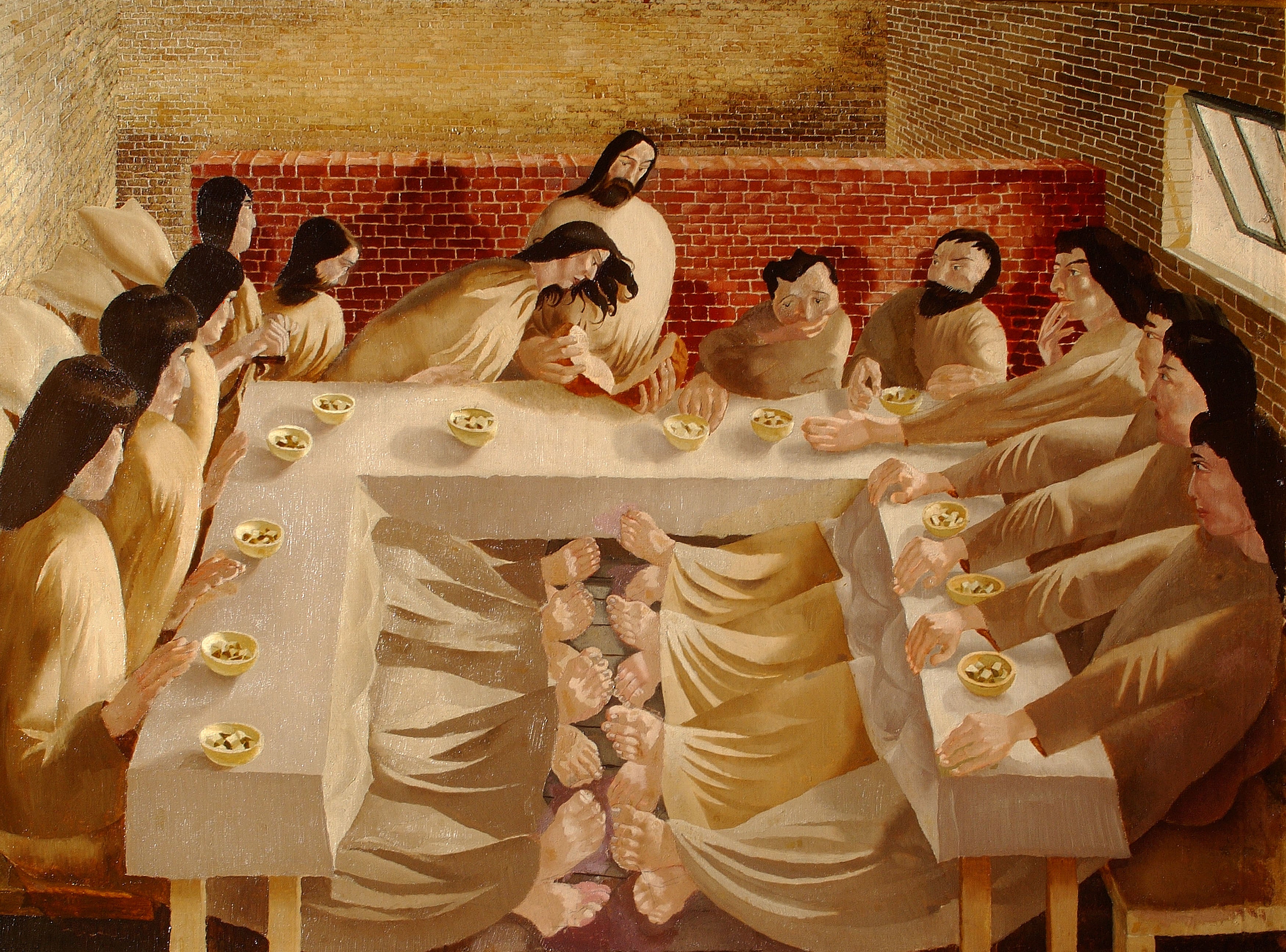The biggest star in the history of art is back: God
Stanley Spencer was the late grand master of British religious art. Roger Wagner paints Biblical figures against London backdrops. Shown together for the Stanley Spencer Gallery’s compelling ‘Everywhere Is Heaven’ exhibition, these artists are a match made in heaven, writes Geordie Greig


God is back! While for so many centuries he was centre stage in art, today he has exited almost entirely. It was as a comic aside in the 1950s that the American poet Ogden Nash inserted him into possibly the shortest ever poem, called “Death of a Waiter”, which goes:
“By and by, God caught his eye.”
Well, ever since then God has been almost entirely squeezed out of most contemporary painting, so it is quite a moment when an exhibition opens combining the late Grand Old Master of British religious art, Stanley Spencer (1910-1983), and the very much living Roger Wagner, a formidable English painter of faith and religious scenes, now in his sixties and in demand.
It is a surprising move in our secular age to embrace God as a subject, and bold of Wagner to exhibit alongside perhaps the greatest religious painter of the 20th century. But Roger Wagner’s Everywhere is Heaven show complements and stands out brightly and powerfully alongside works by Spencer at the eponymous gallery. The combination enhances them both with startling images of biblical scenes to provoke and promote the Christian mythology.
The show is in Cookham, where Spencer famously lived, and is the first collaboration by his museum-gallery with a contemporary artist. They echo each other with figurative pictures, itself unusual in an art world so often dominated by abstractions and installations. Both painters take inspiration in biblical scenes but give them a narrative twist of tension with compelling results. “I had no special feelings for art, but art seemed the only thing which revealed Heaven,” wrote Spencer 90 years ago about the symbiosis of art and faith, specifically the Bible.
Key to Wagner’s deeply Christian paintings is the poetry of George Herbert, who asserted that art finds “heaven in ordinary”. He has put the people he paints – moving Biblical figures – in today’s modern world. Take Peter walking in front of Battersea Power Station, or Abraham before Sizewell A nuclear station.

These two painters are a sort of late perfect match, even, one could say, made in heaven. Both have been described as “visionary geniuses” and were influenced by 17th century metaphysical poets. Certainly they have a shared faith and an ability to surprise. Where Spencer took Cookham, Wagner’s inspiration is Suffolk, a place where he holidayed as a child, or Oxford, where he studied and now lives.
Both artists provide echoes and contrasts to each other’s works, making for a compelling exhibition. According to Amanda Bradley Petigas, who introduces the catalogue, they both celebrate love, mystery and courage. Wagner explains: “I have no explanation for why things happen; but I do celebrate trust. There are explanations. It is not meaningless chaos that confronts us every day.“
Stanley Spencer Gallery, Cookham, until 24 March
Join our commenting forum
Join thought-provoking conversations, follow other Independent readers and see their replies
Comments
Bookmark popover
Removed from bookmarks